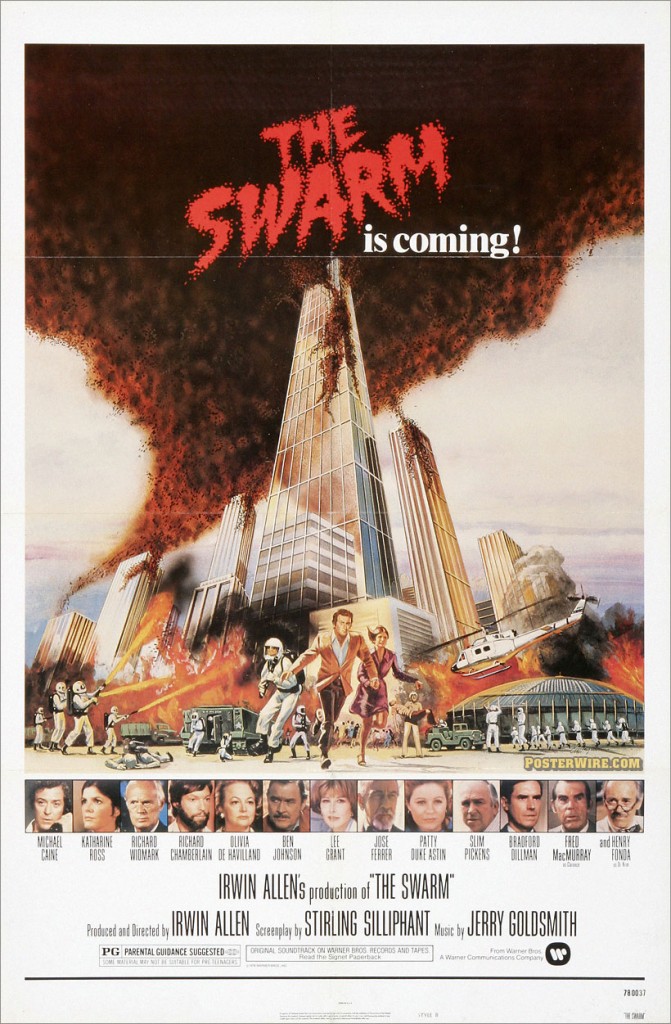 My loyal readers know that from time to time I review insect-themed horror films on this blog. It’s one way to understand the relationship between humans and insects. Today’s review: The Swarm (Warner Brothers, 1978).
My loyal readers know that from time to time I review insect-themed horror films on this blog. It’s one way to understand the relationship between humans and insects. Today’s review: The Swarm (Warner Brothers, 1978).
The Swarm is about a swarm of killer bees that terrorizes a big part of the state of Texas. Bodies pile up by the tens of thousands, mostly offscreen, but it’s actually not a very scary movie. It was directed by Irwin Allen, who had a string of seventies disaster hits that included Poseidon Adventure and Towering Inferno. And like those other disaster movies, it features a star-studded cast, led by Michael Caine as an entomologist, and featuring Richard Widmark, Henry Fonda, Richard Chamberlain, Olivia de Havilland with a lot of hairspray, Fred MacMurray, and Katharine Ross.
The movie opens with ominous music, and white and orange-clad guys creeping through a military building, braced to encounter enemies . . . but the scene goes on for about six minutes and all the suspense trickles away after about one. You’re actually relieved when they finally come upon all the bodies in the control room, mysteriously dead at their posts. We will eventually learn (duh) that they met their end by being stung to death by the bees.
There are several unfortunate references to “the Africans” and how they’re invading, and I didn’t see a single black actor whatsoever in this huge cast.
The script is full of awful dialogue. Michael Caine ends several scenes by shouting at Richard Widmark (who plays a general). Michael Caine is onscreen almost the entire movie, and manages somehow not to get stung once.
As the swarm (bent on revenge?) is fast-approaching the town, Olivia de Havilland as Miss Schuster, the school principal, gets a frantic call from the sheriff, telling her to get everyone inside. She delivers this speech, excruciatingly slowly, over the school’s PA system:
[Hangs up the phone in slow motion. Walks as though in a daze toward the mike, picking it up very slowly]: Attention. Attention. This is Miss Schuster. Please listen very carefully. [another pause as she gathers herself to deliver the awful news] A swarm of killer bees is coming this way.
By the time she finishes delivering the warning, a few dozen pupils have already been overcome by the bees and are lying lifeless on the sidewalk.
Entomologically speaking, the movie is, of course, absurd. Apis mellifera scutellata, popularly called the “African bee,” is just one of at least ten species of bees from Africa. Although more aggressive than European species, it does not travel en masse, harboring a grudge, intent on destroying humankind. It tends to be more easily disturbed than its European counterpart and stings more readily, but it is also a more efficient nectar gatherer and produces more than twice the amount of honey than does the European species. And it’s not a carnivore, for Pete’s sake. The movie has quite a few scenes showing the bees clustering en masse on the bodies of their victims. I’m not sure what we’re meant to think the bees are doing, and neither, I think, are the film makers.